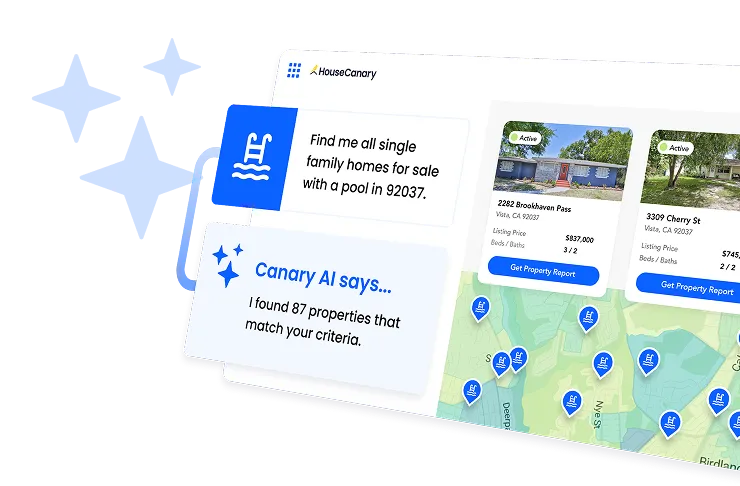
The $45 trillion residential real estate is the largest asset class in the United States, and for many Americans, buying a home is the single largest investment they will ever make. And for investors, lenders, and real estate professionals, understanding property values is the foundation of every transaction.
But what is the true value of residential properties? Does anyone really know?
And perhaps even more importantly, how is the value of properties trending? Is it going up? Is it going down? Why?
Those are precisely the kinds of questions we’re answering at HouseCanary.
Years ago, when I worked as a strategy consultant, I helped companies in the consumer packaged goods sector optimize the sale of everyday items like clothing, shoes and deodorant. Because we were data-driven, we could be very specific, pinpointing where to ship inventory based on weather forecasts, known buying behaviors, etc.
Then, after the 2008 Financial Crisis, I was called in to help some top U.S. investors make smart decisions about newly-available real estate. I was stunned to discover how difficult it was to apply data-driven tactics to calculate and forecast property values.
The simple truth is, back then, we could predict fashion trends better than we could predict real estate trends. Information about the market for women’s shoes, for instance, was more readily available, more abundant and more accurate (!) than information about the homes for sale in my neighborhood.
The Evolution of Real Estate Valuation: Moving Beyond Real Estate Data 1.0
I was dumfounded. And essentially, that’s how HouseCanary was born. I realized it was time to move beyond Real Estate Data 1.0—and from the beginning, it was clear that doing so would completely transform how real estate properties are bought and sold.
Think about it. What if real estate property values no longer depended on a “guesstimate,” a realtor’s hunch or “going with your gut?” What if investors could buy and sell with confidence –because the decisions they made were backed by data?
We could predict the demand for sneakers with pinpoint accuracy—but estimating home values was often reduced to a mix of outdated comparables, appraiser opinions, and educated guesses.
This gap in real estate analytics led to the creation of HouseCanary. We knew the industry needed more than just fragmented data—it needed a single source of truth for property valuation and housing market forecasting. We’ve built the industry's most sophisticated property valuation and forecasting platform to answer precisely these questions—bringing data-driven decision-making to an asset class that has historically relied on gut instinct and outdated methodologies. Today, we’ve moved beyond traditional real estate data to empower investors, lenders, real estate agents, and loan officers with the insights they need to make informed decisions.
How does HouseCanary help investors, buyers, and sellers better understand property values?
HouseCanary provides the most accurate and comprehensive real estate data and analytics available. Our platform enables professionals across the industry to:
- Access a single source of truth: We aggregate and analyze data from MLS listings, county records, mortgage filings, capital markets, and macroeconomic indicators. This ensures our users have the most complete and up-to-date picture of any given property or market.
- Leverage market-leading analytics & AVMs: HouseCanary’s proprietary Automated Valuation Models (AVMs) run thousands of simulations to deliver highly precise property valuations. Our real estate investment software accounts for regional differences, economic trends, and market conditions, providing an unparalleled level of accuracy.
- Utilize powerful tools for every real estate professional:
- CanaryAI: Our AI-powered assistant simplifies underwriting, investment analysis, and property evaluations, providing instant, data-backed insights, and housing market expectations.
- Market Insights: Identify trends and assess market health at the national, regional, and local levels to make smarter investment and lending decisions.
- Property Explorer: Dive deep into individual property details, including value forecasts, comparable sales, rental analysis, and market conditions.
- Brokerage Services: Streamline transactions with direct access to HouseCanary’s brokerage services, enabling seamless buying and selling for investors.
The Future of Real Estate Decision-Making
By integrating cutting-edge analytics, AI-powered insights, and comprehensive market data, HouseCanary is transforming how real estate professionals assess risk, identify opportunities, and execute transactions with confidence. The data-driven approach that revolutionized industries like CPG is now reshaping real estate—bringing precision, accuracy, and efficiency to the largest asset class in the country.
Whether you’re an investor, lender, real estate agent, or loan officer, HouseCanary provides the tools and insights you need to stay ahead of the market and maximize returns. The era of guessing is over—real estate decisions should be as precise as any other financial investment.











.jpg)





.jpeg)







